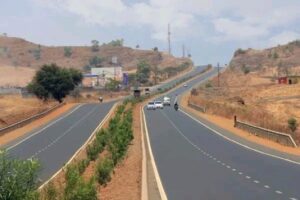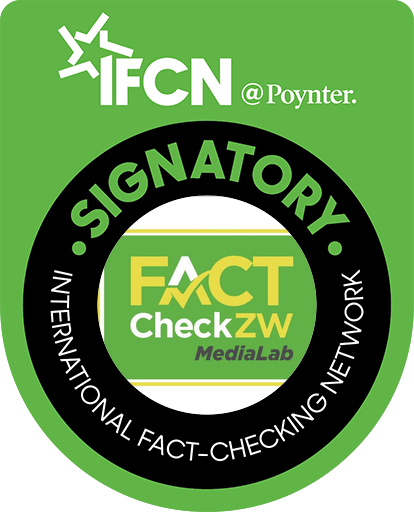CLAIM: South Africa currently buys water from Zimbabwe that comes from Limpopo river meaning the river belongs to Zimbabwe.
SOURCE: Social media account
VERDICT: False
Ever thought of who owns the rivers that surround Zimbabwe? Interestingly, most of Zimbabwe’s borders are marked by rivers – the mighty Zambezi to the North and the Limpopo to the south.
With the massive rains experienced this season, the rivers are flowing and some are wondering why there are no efforts to harness this water.
An account on X, formerly Twitter, posted a picture of the Limpopo river in full flow with the caption, ‘Zimbabwe and South Africa watching such huge amounts of water going to the Gulf of Mozambique every season shows lack of strategic synergy. A dam along Limpopo/ Vhembe river can be an industrial game changer between the two countries. Irrigation opportunities!’
This led to claims on river ownership, with some posting, ‘These are shared rivers panoita hondo mangwana umwe aita musoro ne mvura yacho (that could cause wars tomorrow with everyone doing what they want with the water). Look at the Zambezi water authority pa Kariba dam we are fighting for water. We have inland rivers like Runde we can build a dam bigger than Tokwe Mukosi’.
Another claimed, ‘There is need for cooperation between South Africa (source), Botswana, Zimbabwe and Mozambique for this. We are reparian (sic) countries since we all share this big river together. I agree, we need to preserve this water’.
There was also a claim that ‘South Africa currently buys water from Zimbabwe that comes from Limpopo river meaning the river belongs to Zimbabwe’.
So who owns the Limpopo river.
The Limpopo rises as the Krokodil (Crocodile) River in the Witwatersrand, South Africa, and flows on a semicircular course first northeast and then east for about 1,800 km to the Indian Ocean. The river forms the border for about 400 km between Limpopo province and Botswana, receiving seasonal tributaries. After swinging eastward between Limpopo province and Zimbabwe, the Limpopo River receives the Shashi River and flows about 240 km to Mozambique.
One of the major characteristics of the SADC region is the presence of a large number of transboundary rivers. Each country in the region shares at least one river basin with another (except, of course, for the island states of Mauritius and Seychelles). Mozambique is a riparian to nine international rivers, and is the lowest down stream riparian to eight of them, and each of Angola and Zimbabwe shares six such rivers with other SADC countries. Moreover, South Africa, Tanzania, Democratic Republic of Congo and Namibia each shares five international rivers, while Botswana shares four international rivers with other SADC countries.
Due to all these shared water resources, no single country owns them. The SADC Water Division, part of the Infrastructure and Services Directorate, addresses water resources management issues through the Revised Protocol on Shared Watercourses (2000), the Regional Water Policy and a series of Regional Strategic Action Plans for the Water Sector – currently on version 3.
The Limpopo river is part of the Limpopo river basin. It is managed by the Limpopo Watercourse Commission. The basin encompasses portions of Botswana, Mozambique, South Africa, and Zimbabwe.
Zimbabwe has the least portion of the overall Limpopo river basin with 15%. Mozambique and Botswana each have 20% with South Africa having the biggest portion at 45%.
The claim that South Africa buys water from Zimbabwe probably arose from the water agreement signed by the two countries in 2024.
Zimbabwe will not be selling the Limpopo water to South Africa.
The two countries signed an agreement for the transfer of treated water from Beitbridge water treatment works in the Republic of Zimbabwe to Musina Town in the Republic of South Africa.
According to a statement released by the South African government, ‘The signed agreement is the end product of a bilateral agreement of Co-operation on Water Resources Management and the establishment and functioning of the Joint Water Commission established by the two countries in 2015. The transfer of treated water from Beitbridge Water Treatment Works in Zimbabwe to Musina is a medium-term solution to address water supply challenges in the area.
The capacity of the Beitbridge Water Treatment Plant is 35 million cubic metres/annum (96 Ml/day) and is currently not fully utilised in Zimbabwe, with only 10% of the capacity used for Beitbridge. The two countries will kickstart an implementation plan and oversee the construction of a pipeline and of pump stations to transfer 15 million cubic metres (41 ML/day) of treated water from Zimbabwe to Musina.’
Conclusion
The claim that ’South Africa currently buys water from Zimbabwe that comes from Limpopo river meaning the river belongs to Zimbabwe‘ is false. The Limpopo river is not owned by any one country but is run by a commission comprising four countries – Zimbabwe, Botswana, Mozambique and South Africa. It is equally false that South Africa is buying Limpopo water from Zimbabwe. The agreement between the two countries is for South Africa to buy treated water from Zimbabwe since Beitbridge Treatment Water Works has capacity to provide water for the two towns of Beitbridge and Musina.
The two implementing agents to oversee the construction projects are South African Development Bank, and the Zimbabwe National Water Authority, and the completion of the projects is expected to be in 2026.











